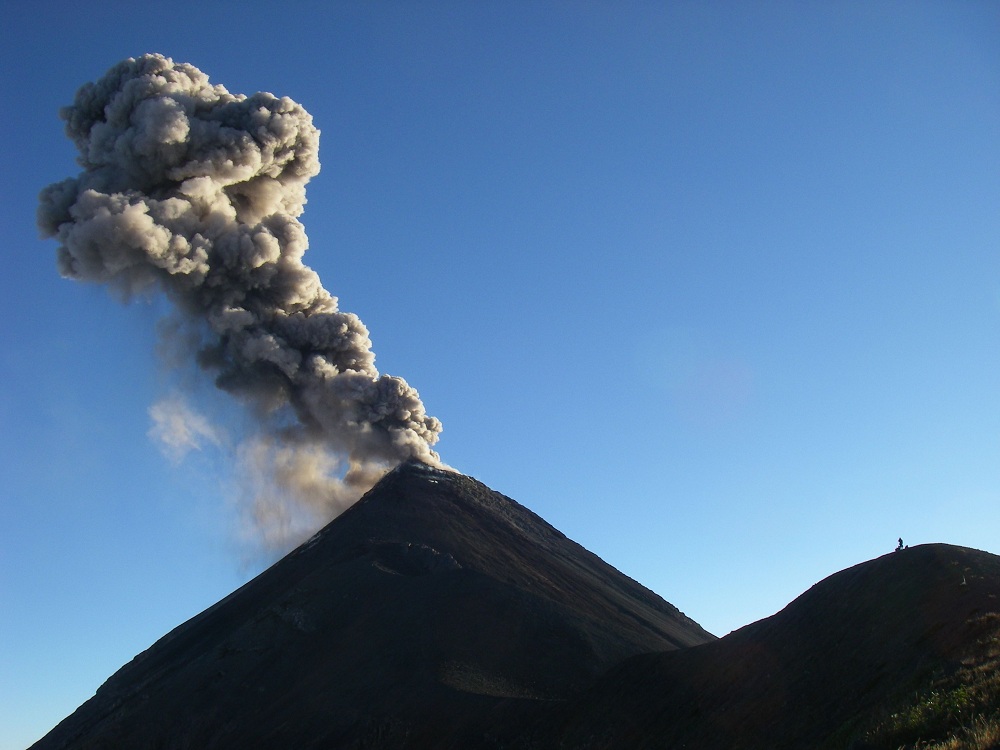Unlocking the Details to How Volcanoes Work

This Behind the Scenes article was provided to LiveScience in partnership with the National Science Foundation.
Like spaghetti sauce bubbling in a pot, small volcanic eruptions occur almost constantly at several volcanoes around the world. These small eruptions do not disrupt air traffic or threaten lives like the recent eruptions of Eyjafjallajökullin Iceland or Puyehue-Cordon Caulle in Chile, and they do not produce ominous five- to ten-kilometer-high ash plumes.
While these small events are insignificant in terms of their threat to the public, they are critical to studies of volcanic processes.
Greg Waite, assistant professor of geological and mining engineering and sciences at Michigan Technological University, is studying the "mini-earthquakes" that these small eruptions cause in order to unlock details about how all eruptions work. The earthquakes can help answer important details about the shape of volcanic plumbing systems and the processes that govern eruptions.
Some questions his work is trying to answer include: Is the magma conduit, also known as a magma channel, a "soda straw" that taps a deep magma reservoir or a pathway made up of interconnected cracks? And how much force is associated with those eruptions? What is the role of magmatic gases in driving eruptions?
Close up volcanoes
To answer them, Waite and his research team record earthquakes, low-frequency sound, and gas emissions from high on the flanks of active, but relatively gentle volcanoes.
Get the world’s most fascinating discoveries delivered straight to your inbox.
"At [the] Villarrica volcano in Chile we are able to look down into a volcano that is bubbling all the time," Waite said. "Small bubbles are bursting and splattering lava, and each of those bursts generates seismic waves in the ground and sound waves in the air. We are measuring the mini-earthquakes from these bubble-bursts to learn about the processes in the shallow part of the conduit."
The relative safety of the volcano makes it a great place to study, he said: "We can get instruments above and below the elevation of the lava surface, which is somewhat unusual."
Close observations are essential for modeling the details of the sources of those earthquakes, Waite explained, because they allow for recording the so-called near-field source terms. These parts of the signal are usually much too small to notice when earthquakes are recorded five or ten kilometers from the source, but can dominate volcanic signals recorded from a few hundred meters away.
Recording the ruckus
These source terms allow the researchers to look at the conduit geometry, a magma pathway to the surface where earthquakes are generated as bubbles find a path upwards. Waite knows the top of the conduit is somewhat circular, but is investigating why it flattens, or becomes more planar, below the surface.
"The seismic data suggest the conduit becomes planar at a relatively shallow depth," he said. "These events are very subtle and cannot be simply identified without careful analysis. We think they arise from the small expansions and contractions in the conduit."
Michigan Tech graduate student Josh Richardson is studying the numerous seismic events, the mini-earthquakes at Villarrica. "He recorded some 19,000 events over the course of about a week on a recent field trip," Waite said.
With support from NSF and the Chilean Volcanic Observatory of the Southern Andes (SERNAGEOMIN – OVDAS) and working in collaboration with Jeff Johnson and colleagues from New Mexico Tech and students from the University de Concepción, the researchers installed an array of stations at distances from four kilometers to just a hundred meters from the active vent of the glacier-clad summit.
Twisting magma channels
The conduit-model developed by Waite and his students produced another interesting result at Fuego volcano in Guatemala. Recent Ph.D. graduate John Lyons discovered that, instead of the magma simply moving vertically up the conduit from a deeper magma chamber, there is corner in the geometry a couple of hundred meters below the surface.
"If lava were to break through to the surface where the corner is, instead of continuing up to the summit, it could have dangerous consequences for the people living on that side of the volcano," Waite said.
Gas-emission measurements are an important part of the work as well. Graduate student Patricia Nadeau uses a camera sensitive to ultra-violet light to measure sulfur-dioxide emissions about once a second, a timescale unobtainable with earlier techniques. These measurements revealed the close link between gas emission and certain types of seismic signals, providing additional clues about the role of gas bubbles in the magma.
Ultimately, Waite hopes that the work will yield to better eruption predictions, as seismic data are the most commonly used source of information about conditions inside a volcano.
"People get into this research for the science, sometimes removed from applications," Waite said. "But the more you learn, the more you can apply to helping the people living there."
Editor's Note: The researchers depicted in Behind the Scenes articles have been supported by the National Science Foundation (NSF), the federal agency charged with funding basic research and education across all fields of science and engineering. Any opinions, findings, and conclusions or recommendations expressed in this material are those of the author and do not necessarily reflect the views of the National Science Foundation. See the Behind the Scenes Archive.



